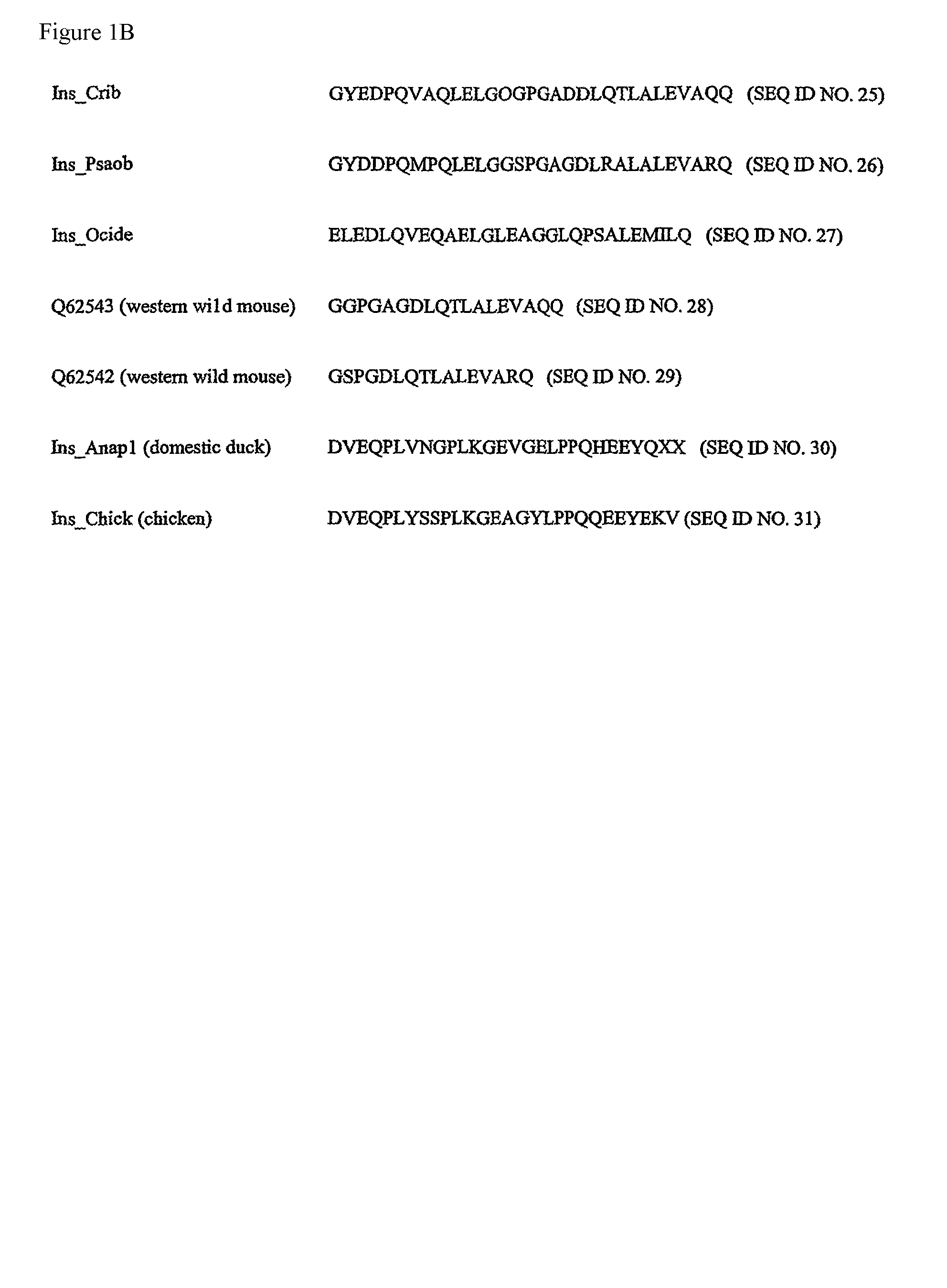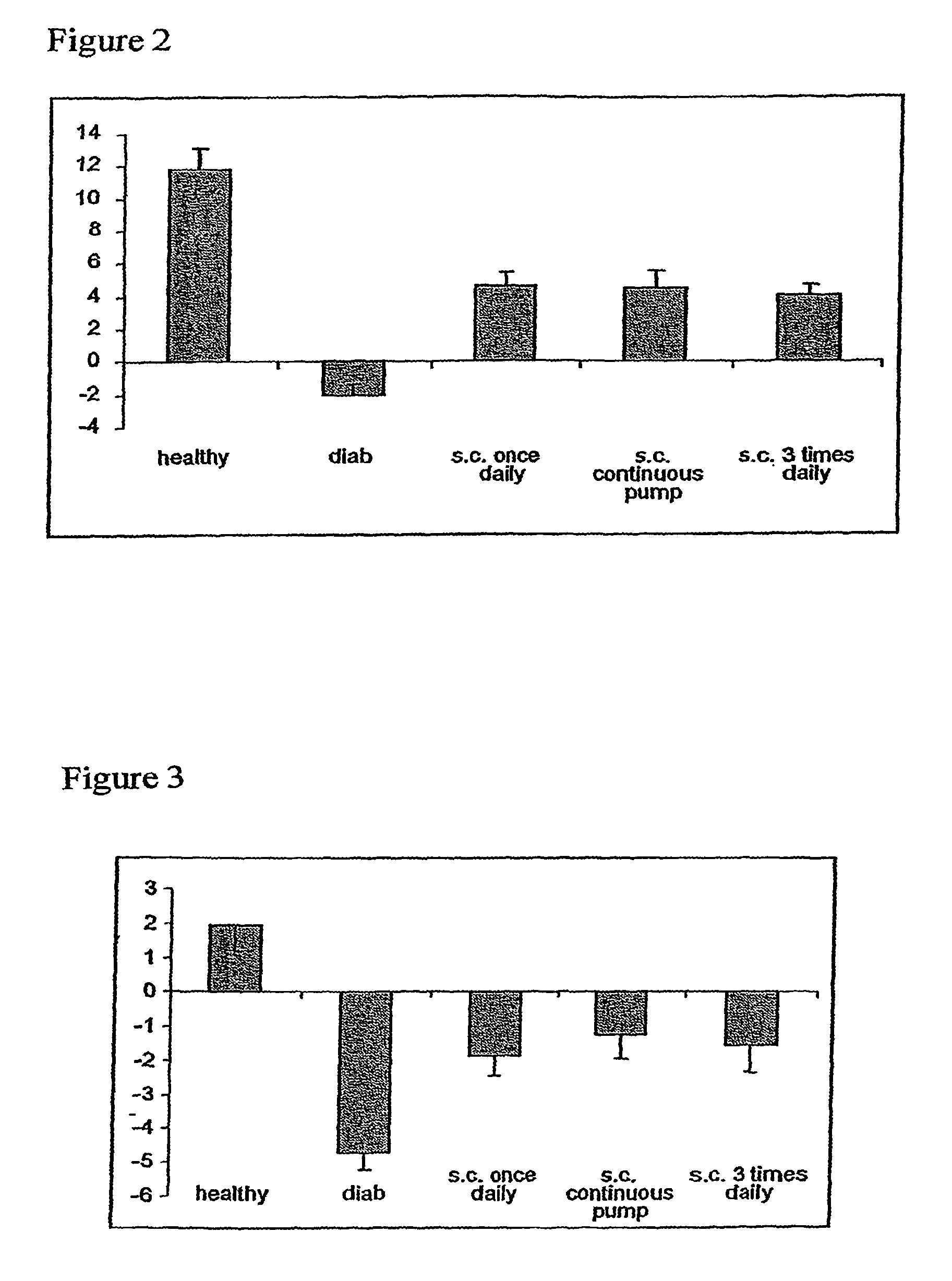Therapeutic applications for C-peptide
a technology of c-peptide and c-peptide, which is applied in the direction of peptide/protein ingredients, extracellular fluid disorder, metabolic disorder, etc., can solve the problems of affecting the effect of c-peptide metabolism
- Summary
- Abstract
- Description
- Claims
- Application Information
AI Technical Summary
Benefits of technology
Problems solved by technology
Method used
Image
Examples
example 1
[0072]Further technical details can be found in Sima et al., Diabetologia (2001) 44: 889-897.
[0073]Prediabetic male BB / Wor rats were used. Ten rats were used in each group, where the animals were closely age-matched. They were maintained in metabolic cages with free access to water and rat chow. Bodyweight, urine volume and glucosuria were monitored daily to ascertain onset of diabetes. Immediately after the onset of diabetes, administration of C-peptides was commenced in either a single dose / 24 hours, three doses / 24 hours or as a continuous infusion by osmopump.
[0074]The single dose given was 75 nmol / kg and the three doses given were each 25 nmol / kg. The continuous infusion gave a dose of 75 nmol / kg over a 24 hour period.
[0075]Synthetic rat C-peptide II with a purity of more than 98% by HPLC was used (Genosys, Cambridge, UK) dissolved in saline (12 mg / ml). Control rats were given a dose of saline instead of C-peptide.
[0076]The nerve conduction velocity in motor and sensory nerves a...
PUM
| Property | Measurement | Unit |
|---|---|---|
| volume | aaaaa | aaaaa |
| volume | aaaaa | aaaaa |
| volume | aaaaa | aaaaa |
Abstract
Description
Claims
Application Information
 Login to View More
Login to View More - R&D
- Intellectual Property
- Life Sciences
- Materials
- Tech Scout
- Unparalleled Data Quality
- Higher Quality Content
- 60% Fewer Hallucinations
Browse by: Latest US Patents, China's latest patents, Technical Efficacy Thesaurus, Application Domain, Technology Topic, Popular Technical Reports.
© 2025 PatSnap. All rights reserved.Legal|Privacy policy|Modern Slavery Act Transparency Statement|Sitemap|About US| Contact US: help@patsnap.com



